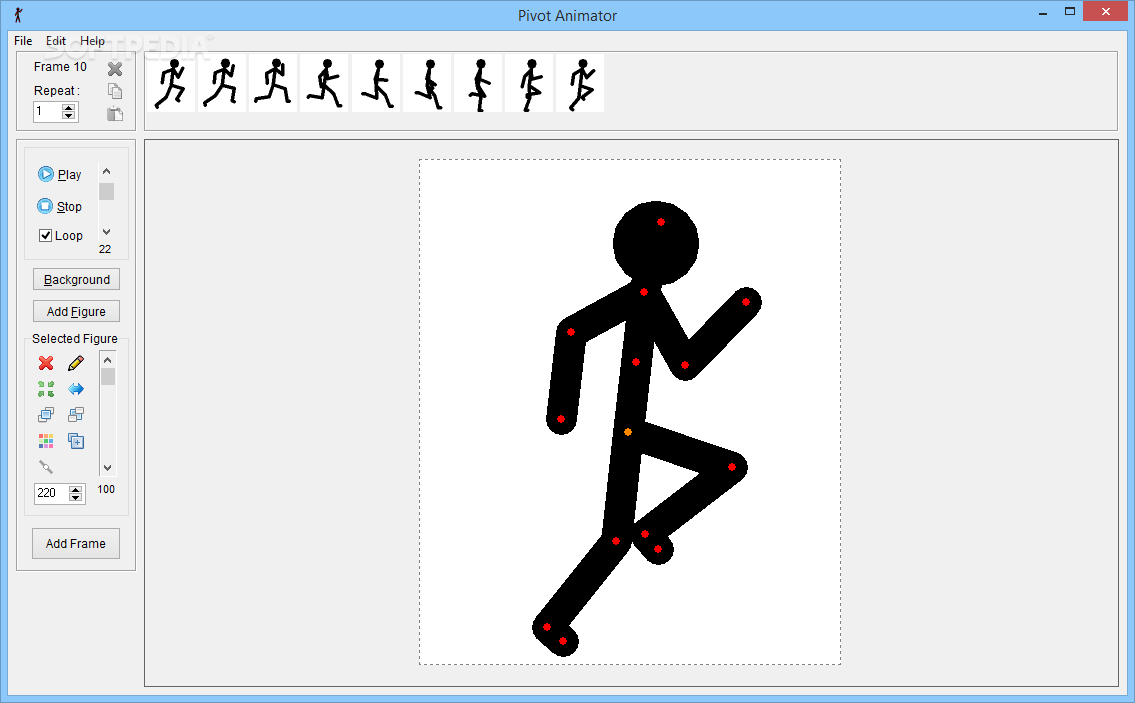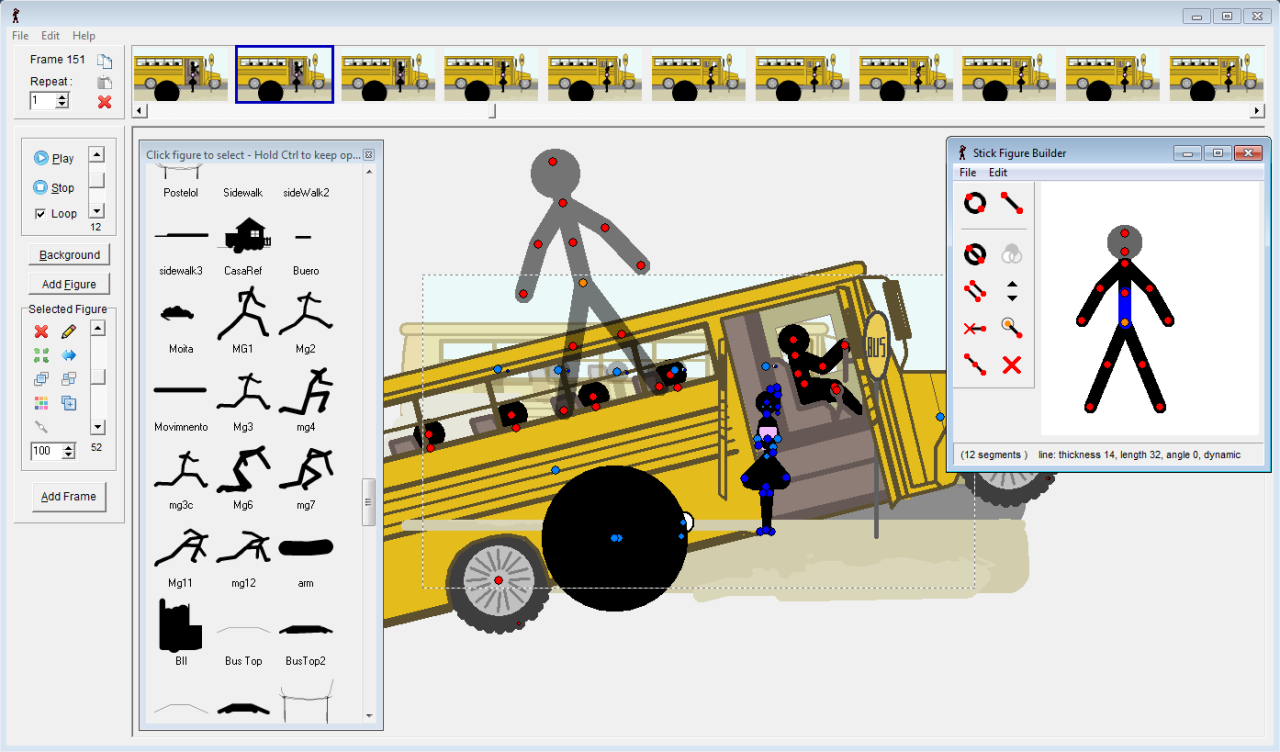Pivot animator, a captivating art form that breathes life into static figures, offers a unique blend of simplicity and creative potential. It’s a technique that’s accessible to beginners yet capable of producing stunning animations for diverse applications.
Table of Contents
The heart of pivot animation lies in its ability to manipulate digital “pivots” or joints within a character’s design, allowing animators to create fluid movements and dynamic expressions. This technique has gained popularity due to its user-friendly software and the ability to achieve visually compelling results with relative ease.
Definition and Scope

Pivot animation is a 2D animation technique that involves manipulating a series of connected points, known as “pivots,” to create movement and change in a character or object. This method is often used in simple animations, particularly for games, explainer videos, and social media content.
Key Skills and Responsibilities of a Pivot Animator
Pivot animators possess a unique set of skills that are essential for creating engaging and effective animations. These skills include:
- Understanding of Animation Principles: Pivot animators need a solid grasp of the fundamental principles of animation, such as timing, spacing, squash and stretch, and anticipation. These principles help them create natural and believable movements.
- Proficiency in Pivot Animation Software: Pivot animators are skilled in using software specifically designed for pivot animation, such as Pivot Stickfigure Animator. They are adept at manipulating pivots, adjusting frame rates, and adding effects to create dynamic animations.
- Creative Storytelling: Pivot animators understand how to use animation to tell a story. They can create characters with distinct personalities, design scenes that evoke emotions, and craft narratives that engage viewers.
- Collaboration Skills: Pivot animators often work as part of a team, collaborating with other animators, designers, and developers. Effective communication and teamwork are crucial for successful project outcomes.
Types of Animation Projects Where Pivot Animation is Commonly Used
Pivot animation is a versatile technique that finds applications in a variety of animation projects.
- Explainer Videos: Pivot animation is well-suited for creating simple and engaging explainer videos that convey complex concepts or processes in an easily digestible format.
- Social Media Content: Pivot animation is often used to create short, shareable animations for social media platforms. Its simplicity and speed make it ideal for creating quick and entertaining content.
- Game Prototyping: Pivot animation is a valuable tool for game developers who are prototyping game mechanics or characters. Its flexibility allows for rapid iteration and experimentation.
- Educational Animations: Pivot animation can be used to create educational animations that make learning more interactive and engaging, particularly for younger audiences.
Creative Applications

Pivot animation offers a versatile platform for unleashing creative expression, allowing users to craft engaging narratives, design captivating characters, and produce stunning visual effects.
Character Design
Pivot animation’s simple yet powerful tools make it ideal for character design. Users can easily manipulate the limbs and body parts of their characters, creating a wide range of poses and expressions. The ability to animate characters frame by frame allows for precise control over movement and detail, resulting in dynamic and lifelike animations.
Storytelling
Pivot animation excels in storytelling, enabling the creation of captivating narratives through animation. The ability to manipulate characters, backgrounds, and objects within a scene provides a platform for crafting compelling stories. Pivot animation’s simplicity allows for rapid prototyping and iteration, making it ideal for experimenting with different storytelling approaches.
Visual Effects, Pivot animator
Pivot animation can be used to create a variety of visual effects, adding depth and dynamism to animations. The ability to manipulate objects and create complex motion paths enables the creation of effects such as explosions, fire, and water. The frame-by-frame nature of pivot animation allows for fine-tuning of visual effects, resulting in realistic and captivating animations.
Successful Pivot Animation Projects
Pivot animation has found its way into various industries, including advertising, education, and entertainment. Here are a few examples:
- Advertising: Many brands have utilized pivot animation for creating engaging and memorable commercials. The simple yet effective nature of pivot animation allows for quick production and cost-effective solutions.
- Education: Pivot animation is used in educational videos to explain complex concepts in a clear and engaging manner. The ability to create visual representations of abstract ideas makes pivot animation an effective tool for teaching and learning.
- Entertainment: Pivot animation has gained popularity in the entertainment industry, with numerous independent animators creating short films and web series using the software. The accessibility and ease of use of pivot animation have made it a popular choice for independent creators.
Types of Pivot Animation Projects
| Type of Project | Potential Applications |
|---|---|
| Character Animation | Video Games, Animated Movies, Web Series, Educational Videos |
| Storytelling Animation | Short Films, Music Videos, Commercials, Educational Videos |
| Visual Effects Animation | Special Effects for Movies and TV Shows, Animated Games, Educational Videos |
The Future of Pivot Animation
Pivot animation, a simple yet powerful tool, has been steadily evolving, and its future holds exciting possibilities. With the rise of AI and VR, pivot animation is poised to become even more accessible and versatile, influencing the landscape of animation and digital media.
The Impact of AI and VR
The integration of AI and VR into pivot animation promises to revolutionize the creative process. AI-powered tools can automate repetitive tasks, allowing animators to focus on more creative aspects. For example, AI algorithms can analyze existing animations and generate new variations, or even create entirely new animations based on specific parameters. VR technology can immerse animators in a virtual environment, providing a more intuitive and interactive way to manipulate objects and characters. This allows for more realistic and immersive animations, particularly in the context of virtual reality experiences.
Pivot Animation in the Future of Animation and Digital Media
Pivot animation’s future is bright, with its potential to become a vital component in the evolving landscape of animation and digital media.
- Accessibility and Ease of Use: Pivot animation’s simplicity and accessibility make it an ideal tool for aspiring animators and educators. With the help of AI-powered tools, the creation process will become even more streamlined, attracting a wider audience and fostering creativity.
- Increased Versatility: The integration of VR and AI will expand the possibilities of pivot animation, enabling animators to create more complex and dynamic animations. This versatility will open doors for new applications in various fields, including gaming, advertising, and education.
- Personalized Experiences: AI-powered tools can analyze user preferences and create personalized animations, tailored to individual tastes. This personalization will enhance user engagement and create more immersive experiences in various digital media formats.
Case Studies
Pivot animation has a rich history of creative projects that have pushed the boundaries of the medium and inspired countless other artists. These projects serve as valuable case studies, showcasing the diverse applications, challenges, and achievements of pivot animation. By examining these projects, we gain insights into the evolution and potential of this unique form of animation.
Notable Pivot Animation Projects
The following table presents a selection of notable pivot animation projects, highlighting their key features, creators, and impact on the field.
| Project Name | Creator | Key Features | Impact |
|---|---|---|---|
| The Stick Figure Movie | Tony Igy | A humorous and action-packed short film created entirely using pivot animation. It features a simple stick figure protagonist and a dynamic storyline, showcasing the potential of pivot animation for storytelling. | The Stick Figure Movie became a viral sensation, garnering millions of views and inspiring a wave of stick figure animation projects. It demonstrated the accessibility and creative potential of pivot animation for independent filmmakers. |
| Pivot Stickfigure Animator | Josh Sleeman | A free and user-friendly software that revolutionized pivot animation. It provided a streamlined interface, intuitive tools, and a vast library of pre-made assets, making pivot animation accessible to a wider audience. | Pivot Stickfigure Animator significantly lowered the barrier to entry for pivot animation, leading to a surge in new creators and projects. Its ease of use and extensive features fostered a vibrant online community of pivot animators. |
| The Amazing World of Gumball | Cartoon Network | A popular animated television series that incorporates pivot animation in its unique visual style. The show features a blend of 2D and 3D animation, with pivot animation used to create comedic and surreal sequences. | The Amazing World of Gumball demonstrated the versatility of pivot animation, showcasing its ability to integrate seamlessly with other animation techniques. It helped to legitimize pivot animation as a viable form of animation for mainstream television. |
Comparison to Other Animation Styles

Pivot animation, with its unique style and ease of use, stands out among other animation techniques. Understanding its strengths and weaknesses in comparison to other popular animation styles is crucial for choosing the right approach for a project.
Comparison of Pivot Animation to Other Styles
Pivot animation, 2D animation, 3D animation, and stop-motion animation each offer unique advantages and disadvantages, making them suitable for different projects.
| Animation Style | Advantages | Disadvantages | Suitability |
|---|---|---|---|
| Pivot Animation |
|
|
|
| 2D Animation |
|
|
|
| 3D Animation |
|
|
|
| Stop-Motion Animation |
|
|
|
Epilogue: Pivot Animator
From the creation of charming characters to the realization of intricate storylines, pivot animation continues to evolve and captivate audiences. As technology advances, we can expect even more innovative applications of this versatile technique, pushing the boundaries of digital storytelling and visual expression.
Pivot Animator is a versatile tool for creating engaging animations, and it’s often used in conjunction with other software for a complete workflow. For example, you might use Pivot Animator to create the animation itself, then utilize a program like samsung kies to manage and transfer the finished animation to your Samsung device for sharing.
This integration allows for a seamless experience, letting you focus on your creative vision without technical hurdles.
